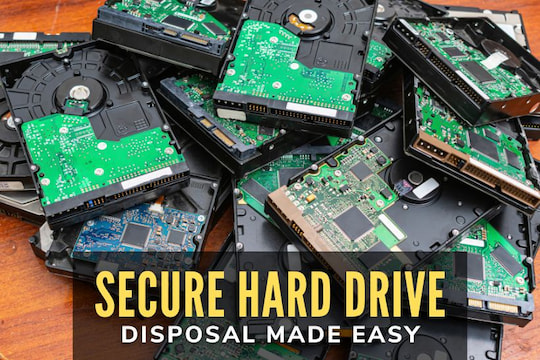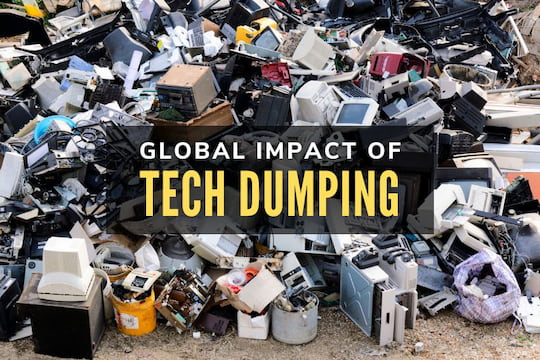One of the biggest environmental issues today involves eWaste disposal challenges & solutions. A key takeaway is that electronic waste should be recycled and kept out of landfills. The U.S. Environmental Protection Agency (EPA) is at the forefront of working on these issues with other environmental organizations. Here's a look at the main challenges facing the eWaste disposal movement.
Defining eWaste

eWaste includes any electronic gadgets that have become outdated or are no longer used by consumers. Other names for eWaste include "e-scrap" and "end of life electronics." The EPA categorizes eWaste as a subset of used electronics with an emphasis on reusing and refurbishing materials for recycling.
One of the biggest issues surrounding eWaste disposal challenges & solutions involves landfills. Many people don't realize that eWaste contains hazardous materials that can leak into the ground even at a dump. These toxic materials become a serious concern when they get into groundwater systems. Furthermore, workers at landfills can be exposed to harmful contaminants leaking from eWaste. These chemicals may include lead, mercury, cadmium, and arsenic.
Over two million tons of eWaste were disposed of in 2009 by U.S. consumers, according to EPA estimates. eWaste products include computers, television sets, cell phones, printers, scanners, and fax machines. About a quarter of this eWaste is sent to recyclers while the rest ends up in landfills.
Educating the Public About eWaste

It's important for federal, state, and local officials to become more educated about eWaste so they can help alert the public about its problems. Many people are unaware of the health and security problems that associate with eWaste. Typical consumers are more interested in keeping up with trendy gadgets than knowing what to do with eWaste afterward. Even when it comes to protecting against data breaches, many people take it for granted that they are not affected by cybercrime.
When disposing of server equipment, it's particularly crucial to wipe old hard drives to prevent confidential data from getting into the wrong hands. So it's important to take eWaste to specialists who can provide certification that all data has been removed from your hard drives.
Strategies for Dealing with eWaste

In 2010 President Obama appointed a task force to develop a national strategy for dealing with eWaste. The group released a report the following year detailing plans to manage eWaste by promoting greener designs for electronics, leading by example, and boosting recycling in the United States. The report also called for cutting down on harmful eWaste exports and improving the safe handling of these products in developing countries.
Since then the EPA, the Global Environment Facility (GEF), and other environmental organizations have invested in helping nations manage eWaste issues. But by 2016 global eWaste disposal hit 49 million tons and has since increased significantly. During this period the life span of electronic devices has decreased, as tech companies have encouraged consumers to keep buying new devices.
Tech companies, however, have a growing interest in "urban mining," which is the recovery of eWaste to use for recycling. This shift reflects a solution to supply shortages for raw materials used to develop electronic circuit boards. Recycling involves dismantling electronic devices, then categorizing and cleaning the materials.
Tougher legislation and wider promotional support for recycling are needed across the globe. Legislation alone, though, won't be enough, as tech companies need to commit to greener products. Additionally, the US should examine how the EU has been more successful at recycling eWaste, which is up to 35 percent.
Conclusion
Awareness is increasing about eWaste disposal challenges & solutions, but the world is far from solving the problem. Better methods are needed for measuring eWaste and promoting recycling to the masses. Ideally, the urgency relating to environmental damage will resonate more with tech companies to design safer products in the future.




















